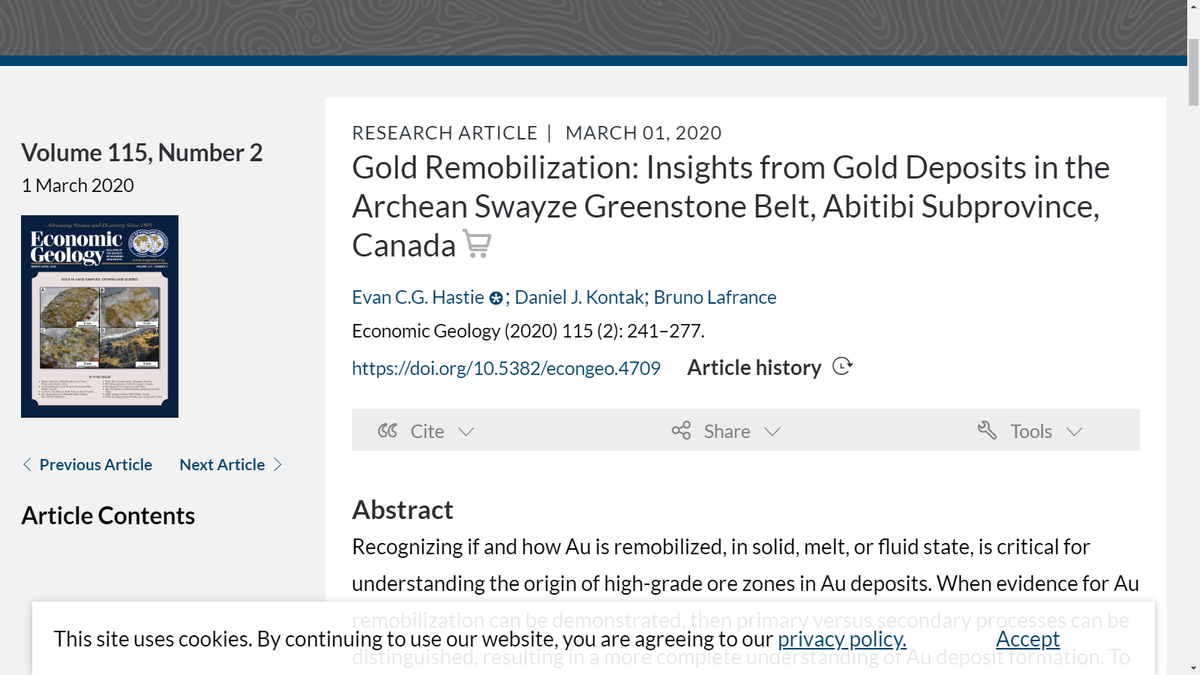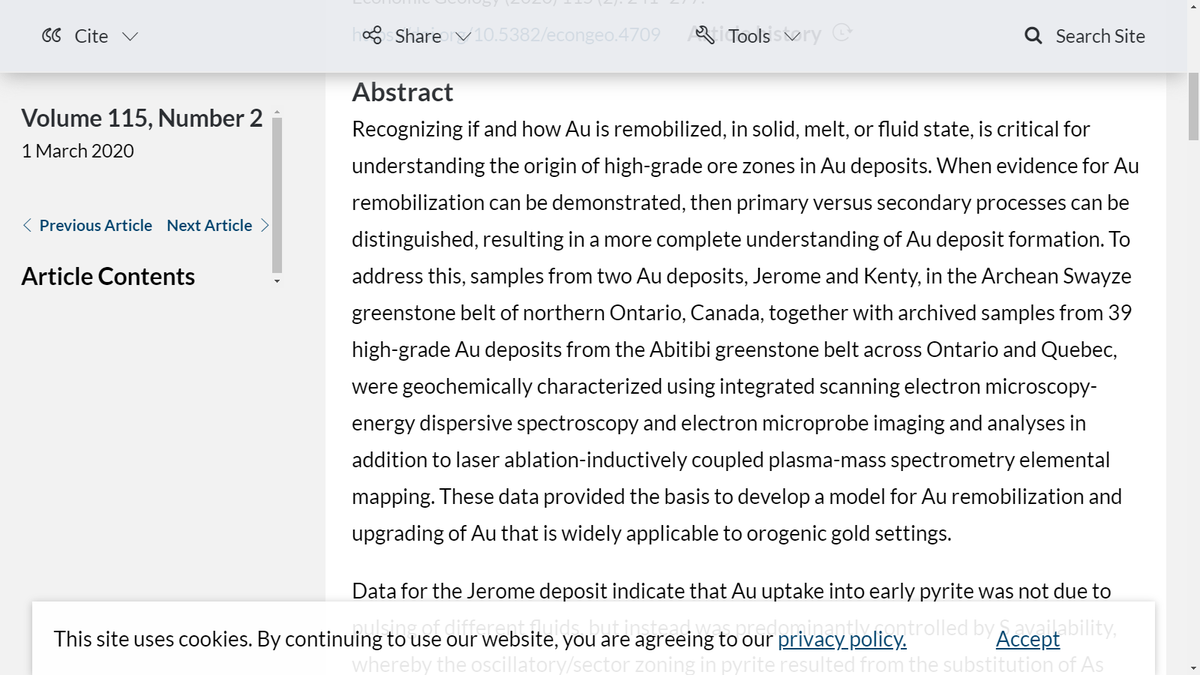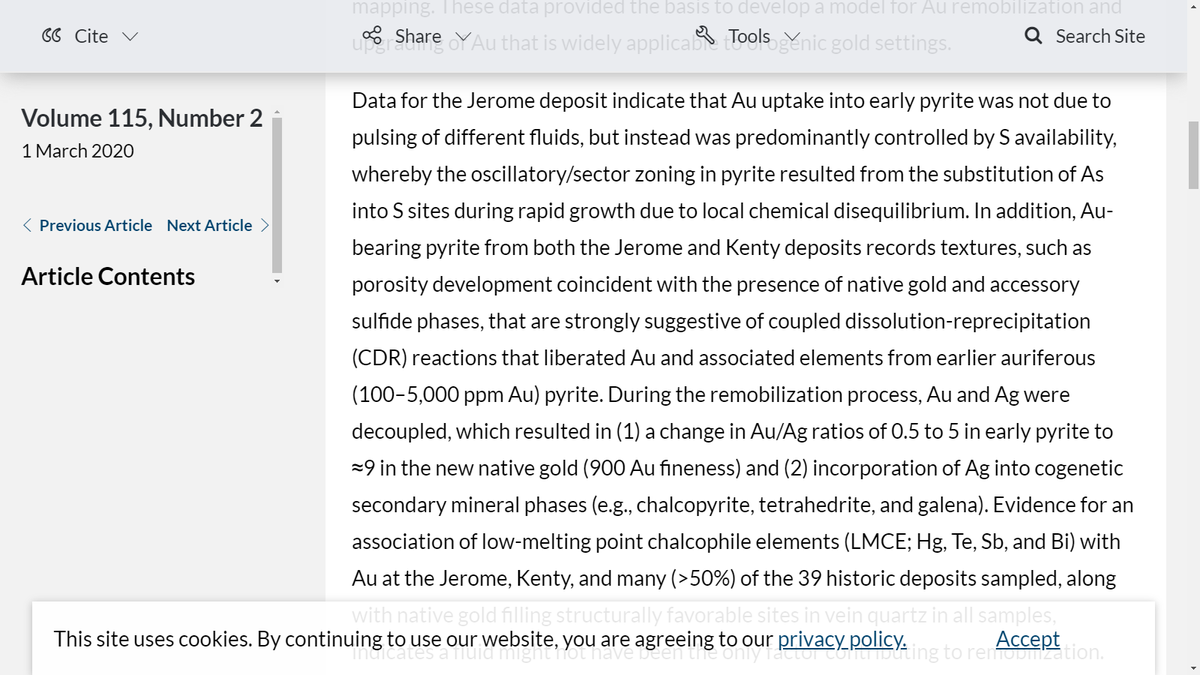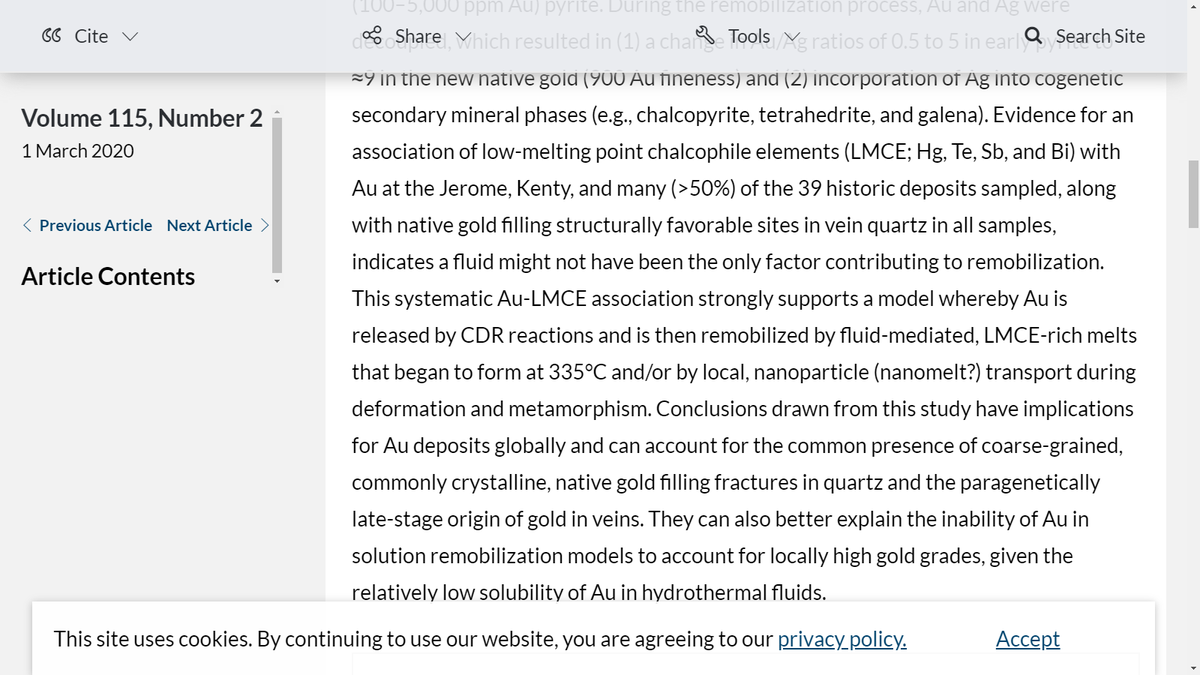@steve_piercey
https://pubs.geoscienceworld.org/segweb/economicgeology/article-abstract/115/2/241/582990/Gold-Remobilization-Insights-from-Gold-Deposits-in?redirectedFrom=fulltext">https://pubs.geoscienceworld.org/segweb/ec...
https://pubs.geoscienceworld.org/segweb/economicgeology/article-abstract/115/2/241/582990/Gold-Remobilization-Insights-from-Gold-Deposits-in?redirectedFrom=fulltext">https://pubs.geoscienceworld.org/segweb/ec...
"Recognizing if and how Au is remobilized, in solid, melt, or fluid state, is critical for understanding the origin of high-grade ore zones in Au deposits." Yes.
"When evidence for Au remobilization can be demonstrated, then primary versus secondary processes can be distinguished, resulting in a more complete understanding of Au deposit formation." If you say so!
"... geochemically characterized using integrated scanning electron microscopy-energy dispersive spectroscopy and electron microprobe imaging and analyses in addition to laser ablation-inductively coupled plasma-mass spectrometry elemental mapping." No mineralogy @steve_piercey?
"These data provided the basis to develop a model for Au remobilization and upgrading of Au that is widely applicable to orogenic gold settings." Yes, please! Thank you. And please give implications for exploration...
"Au uptake into early pyrite was not due to pulsing of different fluids, but instead was predominantly controlled by S availability... oscillatory/sector zoning in pyrite resulted from the substitution of As into S sites during rapid growth due to local chemical disequilibrium."
"... textures... coincident with the presence of native gold and accessory sulfide phases, that are strongly suggestive of coupled dissolution-reprecipitation reactions that liberated Au and associated elements from earlier auriferous (100–5,000 ppm Au) pyrite." Very cool!
"During the remobilization process, Au and Ag were decoupled, which resulted a change in Au/Ag ratios of 0.5 to 5 in early pyrite to ≈9 in the new native gold (900 Au fineness)..." Sounds good!
"... association of low-melting point chalcophile elements (LMCE; Hg, Te, Sb, and Bi) with Au... native gold filling structurally favorable sites in vein quartz in all samples, indicates a fluid might not have been the only factor contributing to remobilization." Right?
"This systematic Au-LMCE association strongly supports a model whereby Au is released by CDR reactions and is then remobilized by fluid-mediated, LMCE-rich melts that began to form at 335°C and/or by local, nanoparticle (nanomelt?) transport during deformation and metamorphism."
"Conclusions drawn from this study have implications for Au deposits globally and can account for the common presence of coarse-grained, commonly crystalline, native gold filling fractures in quartz and the paragenetically late-stage origin of gold in veins."
"... better explain the inability of Au in solution remobilization models to account for locally high gold grades, given the relatively low solubility of Au in hydrothermal fluids." Ah, mercury -- you are a tricky one!
Great article. Thanks for sharing @steve_piercey. Leaves me wondering if we& #39;re back where we started with hunting for pathfinders in orogenic gold system? "low-melting point chalcophile elements (LMCE; Hg, Te, Sb, and Bi)" great elemental markers, but what about mineral clues?

 Read on Twitter
Read on Twitter





